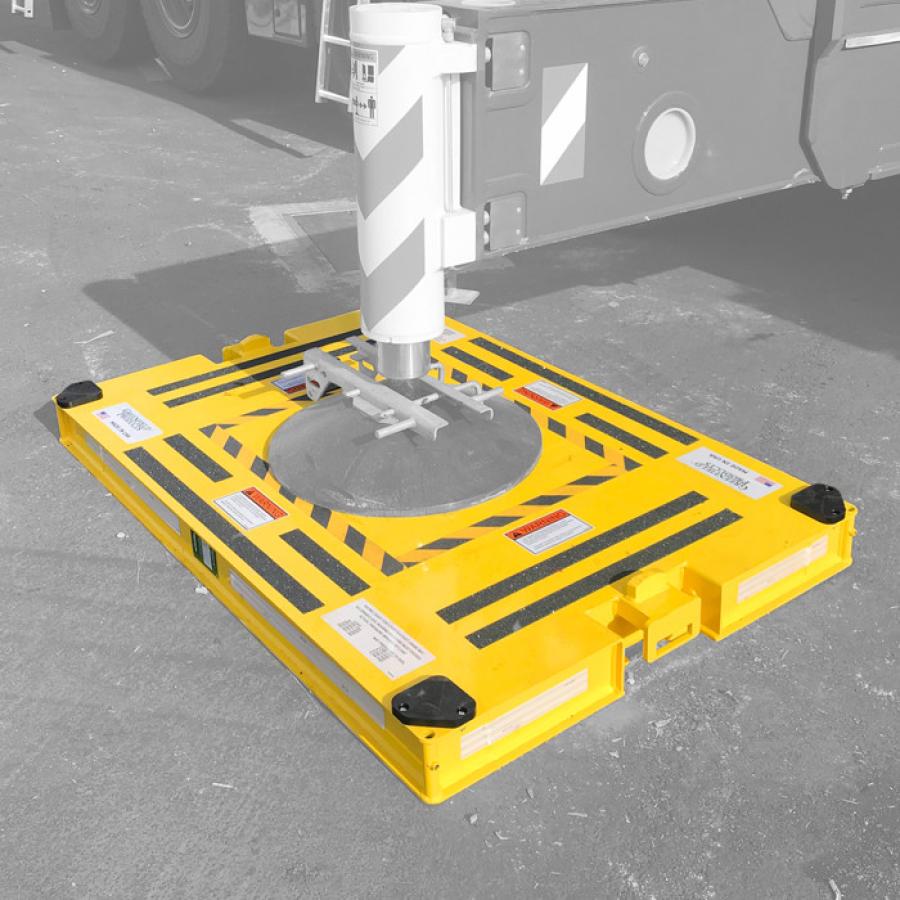
Wed November 4, 2020
Greenfield Products
Creating a more functional surface for construction equipment when ground conditions are difficult is a common challenge within the construction industry.
Leveraging outrigger steel crane mats over traditional wood crane mats provides advantages such as avoiding breakage, insect infestation and rot, while offering stable ground condition, according to Greenfield Products.
Smart Crane Mat Technology
Designed for operator convenience and reduced crane set-up time, the new family of steel crane mats works with hydraulic truck cranes and all-terrain cranes ranging from 90-to 550-ton capacity.
Greenfield's smart mats range in size from 4-ft. by 4-ft., up to 8-ft. by 16-ft. However, these smart crane mats are made of high-strength steel rather than wood, and they also are 40 percent lighter than typical tubular or I-beam style steel mats on the market, according to the company.
"Greenfield's line of smart mats features a two-point pick design that allows the operator to use the same round nylon slings used for the crane counterweights to handle the crane mats," said Gustavo Anzola, sales manager of Greenfield Products. "The mats are designed so they can be lifted as a stack, four mats at a time, or individually. This translates into a very efficient operation when setting up the mats around the crane."
One advantage of Greenfield's smart crane mat technology is that its smart mats have virtually no noticeable deflection when loaded, according to the company. Greenfield's mats are designed with a center grid that provides strength in both directions of the mats, longitudinal and across. This also provides an enhanced load distribution underneath the mat when compared to wood or other steel mats made of tubing or I-beam.
Traditional Wood Crane Mats
Traditionally, crane mats have been constructed using oak or other select hardwood timbers. According to Becht Engineering, "In recent years, as supply dwindles, timbers do not measure a full 12-inch cross section. As they are milled, we often see one or more sides are not square, but rounded due to the smaller diameter of the raw cut logs. In some cases, we are seeing timber mats made from mixed wood species, and some with combined hard and soft woods."
According to Greenfield Products, while the demand for crane mats is extremely high, the quality of wood crane mats has decreased over the years.
In addition, the lifespan of traditional wood crane mats is much shorter than outrigger steel crane mats, and they do not provide the superior stability that smart crane mats can provide, said the company, adding leveraging smart crane mats versus wood crane mats also can help prevent job site delays and protect the environment, as the soil can be damaged by heavy, sinking construction equipment.
Features & Benefits of Outrigger Smart Crane Mats
- Engineered: PE stamped drawings are available upon request;
- Additional Lifting Hardware Options: Interlocking lifting tubes, D-Rings and round lifting lugs also are available options;
- Two-Point Pick Design: Two embedded lifting stubs at each end of the mats allows for a single sling to be used to pick up all mats as a stack or individually. No shackles or hooks required;
- Lightweight: unique design using high-strength steel significantly reduces the tare weight of each mat, offering transportation savings. Tare weight up to 40 percent less than regular steel mats; and
- High-Capacity Rating: Greenfield ensures its mats' rating exceeds the maximum outrigger load posted by the crane manufacturer. Each mat comes with a Greenfield serial number plate with the rating stamped.
Final Thoughts
Greenfield Products' outrigger crane mats and crawler crane mats are made of 100-percent high-strength steel that are lightweight and easier to handle and transport than wood mats.
"Our smart crane mats are also thin profile compared to wood or composite mats, so operators won't have any issues getting the crane outrigger float on top of the mats," said Anzola.
Greenfield designs and manufactures this product in-house at its facility in Union City, Tenn.
 Cranes Equipment
Cranes Equipment Articles
Articles Email Updates
Email Updates Sell Your Machines
Sell Your Machines

 Cranes Equipment
Cranes Equipment Cranes Dealers
Cranes Dealers Cranes Articles
Cranes Articles Email Updates
Email Updates Sell Your Machines
Sell Your Machines